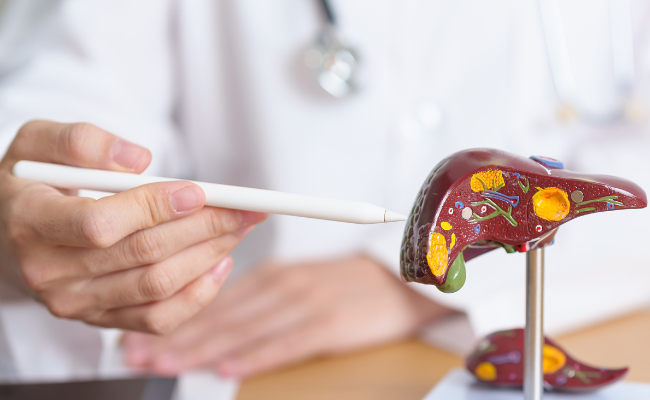What to do incase of Bile Duct Cancer?
- January 31, 2024
- No Comments

What to do incase of Bile Duct Cancer?
Cholangiocarcinoma, commonly known as bile duct cancer, is a rare yet formidable form of cancer originating in the bile ducts – the essential tubes connecting the liver and gallbladder to the small intestine. These ducts are instrumental in transporting bile, a liver-produced fluid crucial for digestion. Bile duct cancer can manifest in various parts of these ducts, presenting symptoms like jaundice, abdominal pain, weight loss, and alterations in stool or urine color. Unfortunately, cholangiocarcinoma is often diagnosed when it has already advanced beyond the bile ducts, posing significant treatment challenges and typically resulting in a poor prognosis. However, advancements in targeted therapies and ongoing clinical trials offer a glimmer of hope for improved outcomes.
Why Immediate Action is Crucial:
Early detection and intervention are vital when it comes to bile duct cancer. This form of cancer tends to be challenging to diagnose in its early stages due to the subtle nature of its symptoms. Jaundice, a common indicator, might not appear until the disease has progressed. Prompt action is essential to improve the chances of successful treatment and to manage the progression of the disease.
How to Approach a Suspected Case:
- Seek Medical Attention: If you experience symptoms associated with bile duct cancer or have risk factors such as chronic inflammation of the bile ducts, liver diseases, or genetic predisposition, consult a healthcare professional immediately.
- Diagnostic Tests: A healthcare provider will likely recommend various diagnostic tests to confirm or rule out bile duct cancer. Imaging studies, such as CT scans or MRIs, may be performed to visualize the bile ducts. A biopsy, involving the removal of a small tissue sample, is often necessary for a definitive diagnosis.
- Consult with Specialists: Bile duct cancer may require the expertise of specialists such as oncologists, gastroenterologists, and surgeons. Consulting with a team of specialists ensures a comprehensive evaluation and tailored treatment plan.
Treatment Solutions:
The approach to treating bile duct cancer depends on factors such as the stage of cancer, its location, and the overall health of the individual. Treatment options may include:
- Surgery: Surgical intervention may involve the removal of the tumor or affected part of the bile duct. In some cases, a liver transplant might be considered.
- Chemotherapy: The use of drugs to kill cancer cells or stop their growth. Chemotherapy may be administered orally or intravenously.
- Radiation Therapy: High-dose radiation is directed at the cancerous cells to eliminate or reduce tumors. This may be employed in conjunction with surgery or chemotherapy.
- Targeted Therapy: This type of treatment targets specific molecules involved in cancer growth and progression. It is often used when other treatments are not effective.
- Clinical Trials: Participation in clinical trials may be an option for some individuals, offering access to cutting-edge treatments and contributing to advancements in cancer research.
Benefits of Timely Treatment:
- Improved Survival Rates: Timely detection and treatment significantly enhance the chances of survival, particularly in the early stages of bile duct cancer.
- Enhanced Treatment Options: Early intervention allows for a broader range of treatment options, including potentially curative surgical procedures.
- Quality of Life: Managing bile duct cancer in its early stages may lead to a better quality of life for the individual, minimizing the impact of symptoms and side effects.
- Reduced Complications: Early treatment helps in preventing the progression of the disease, reducing the likelihood of complications such as liver failure or metastasis.
- Increased Treatment Success: Addressing bile duct cancer promptly increases the effectiveness of treatment strategies, leading to better outcomes for the individual.
Comments (0)